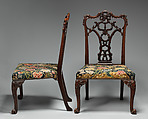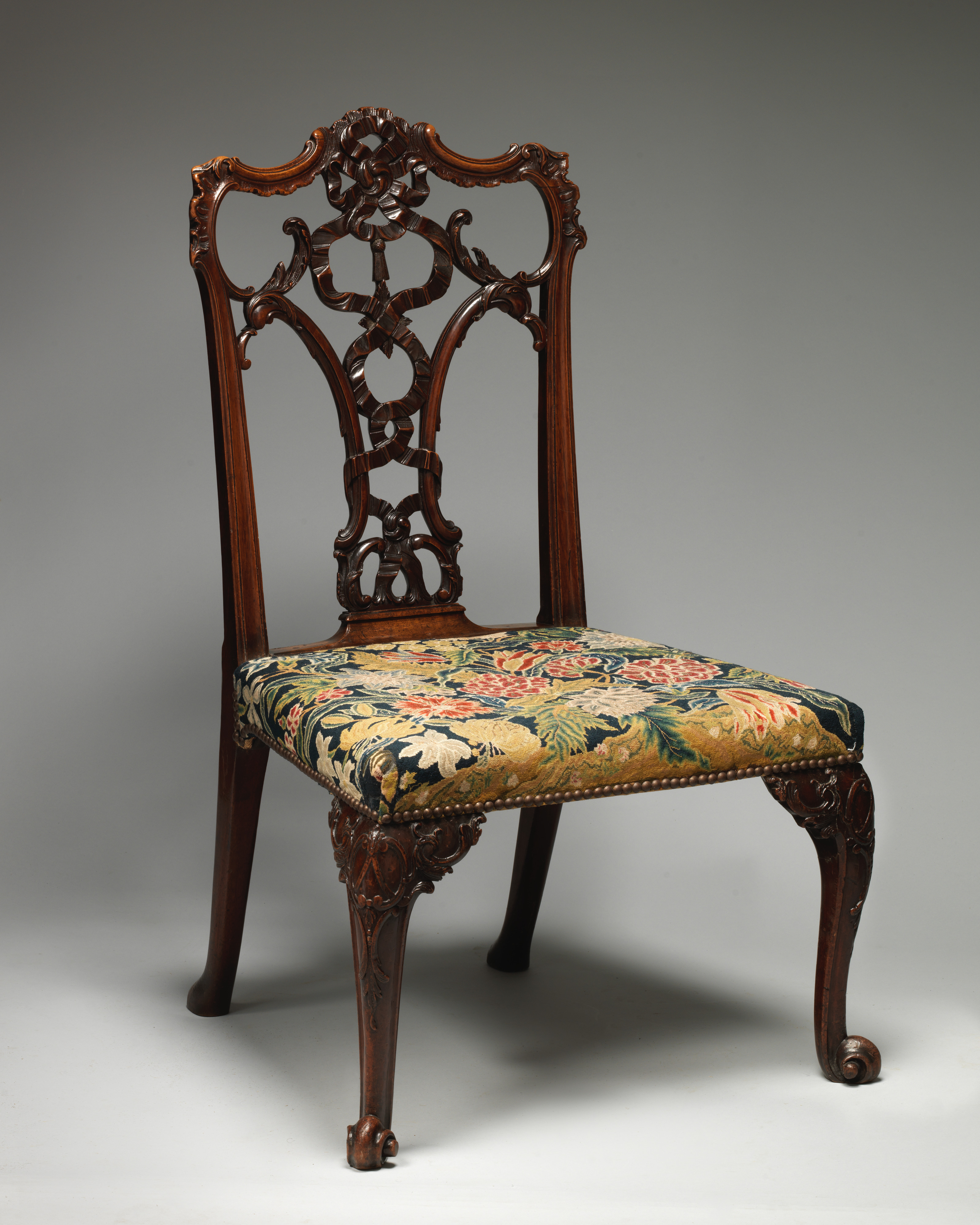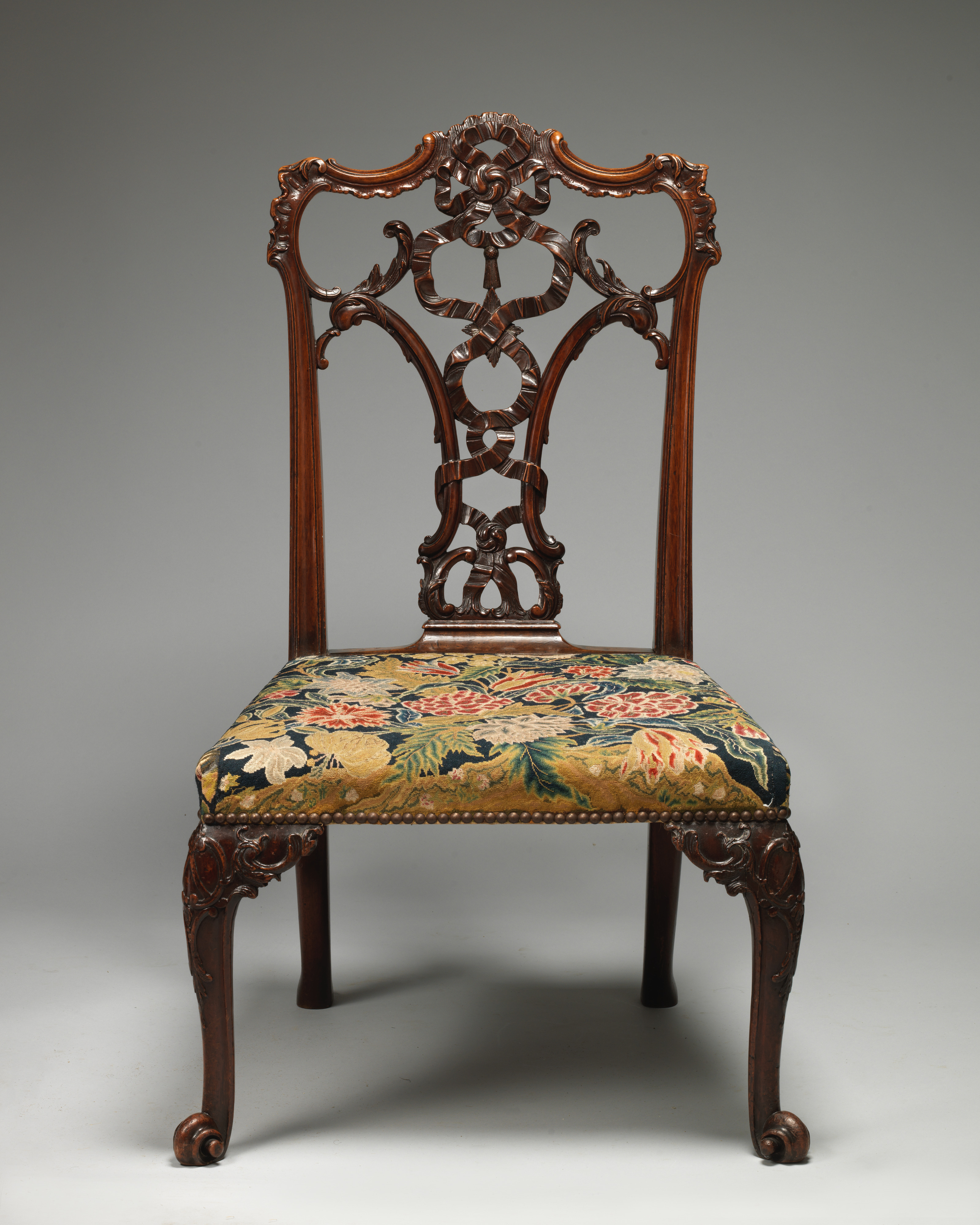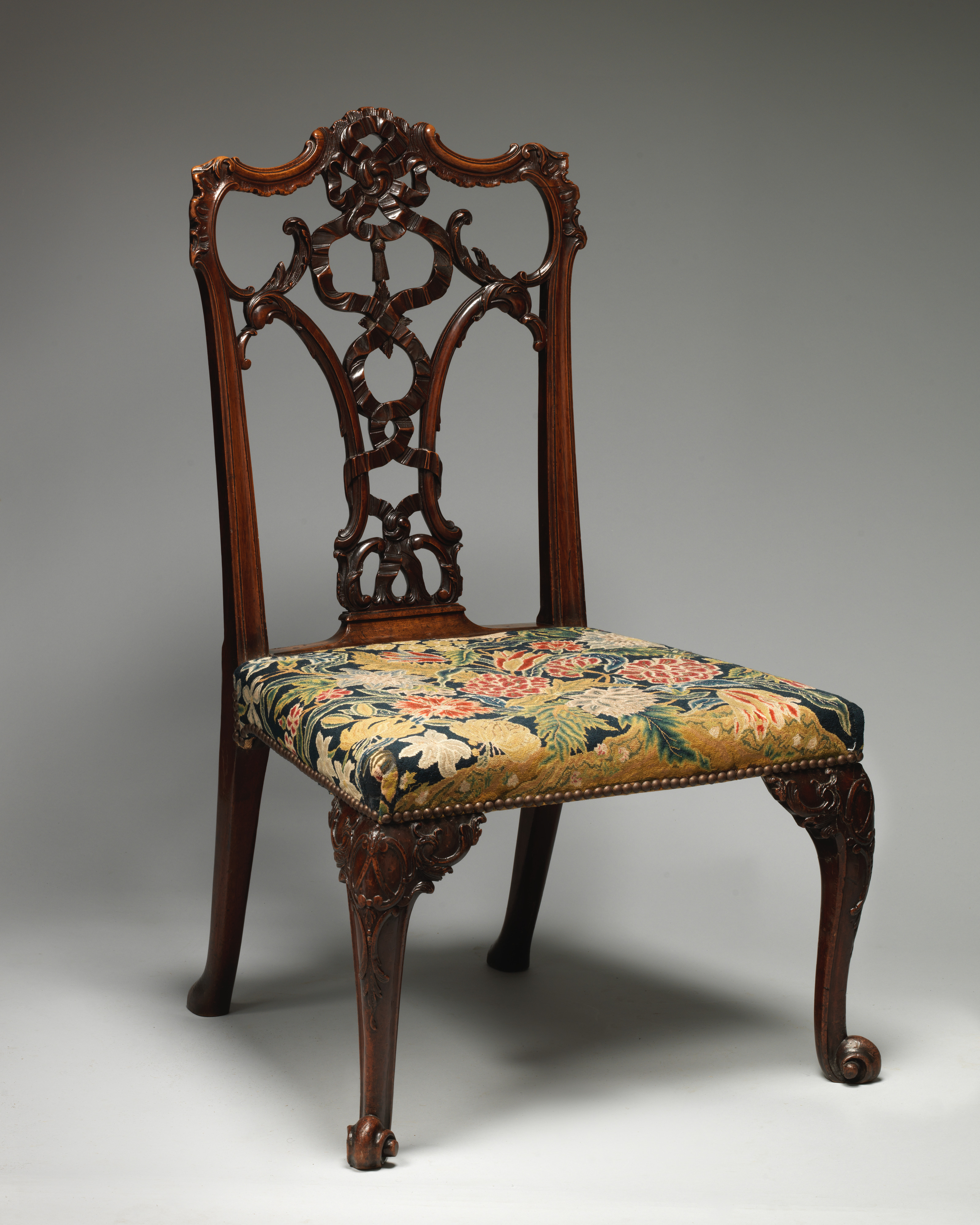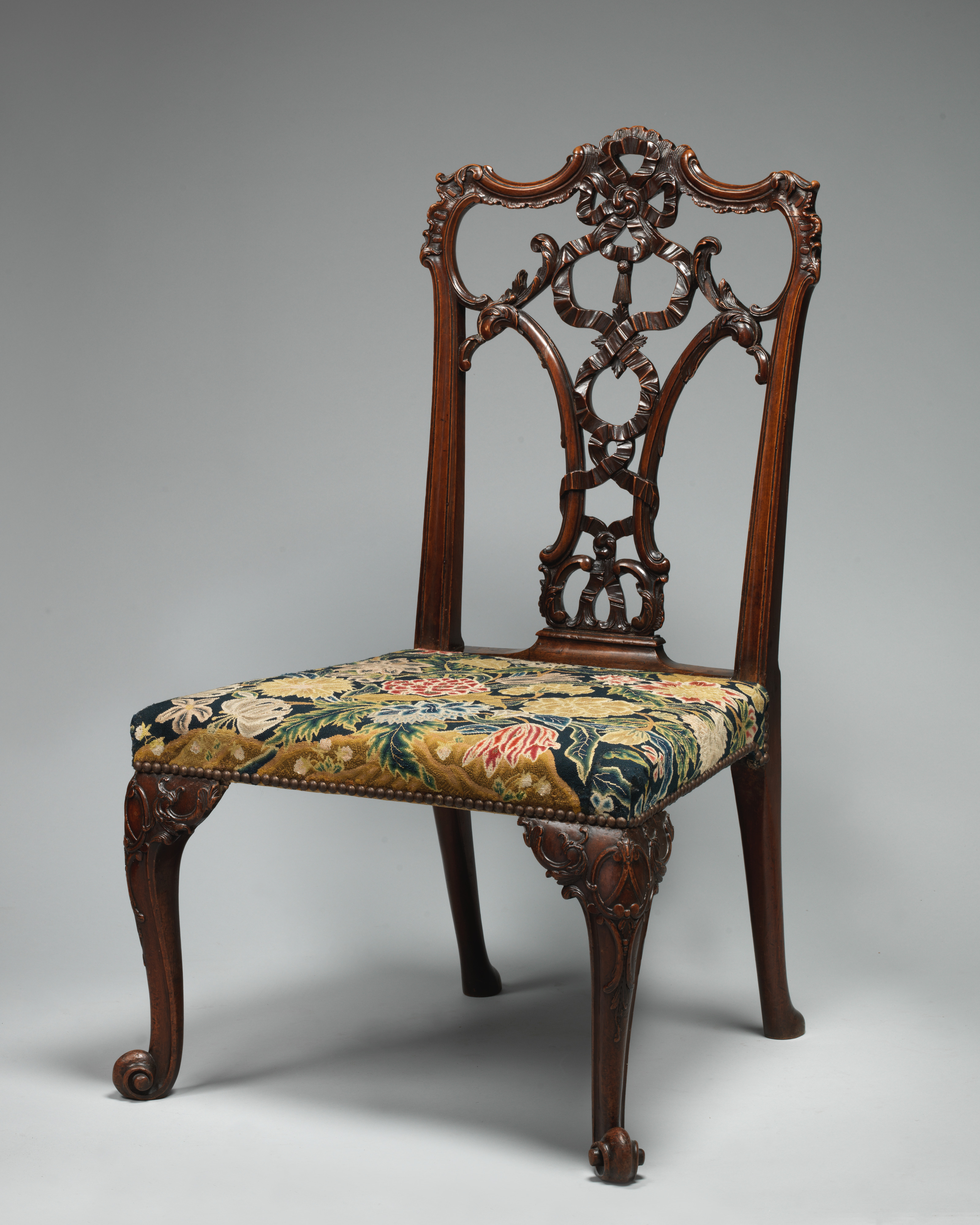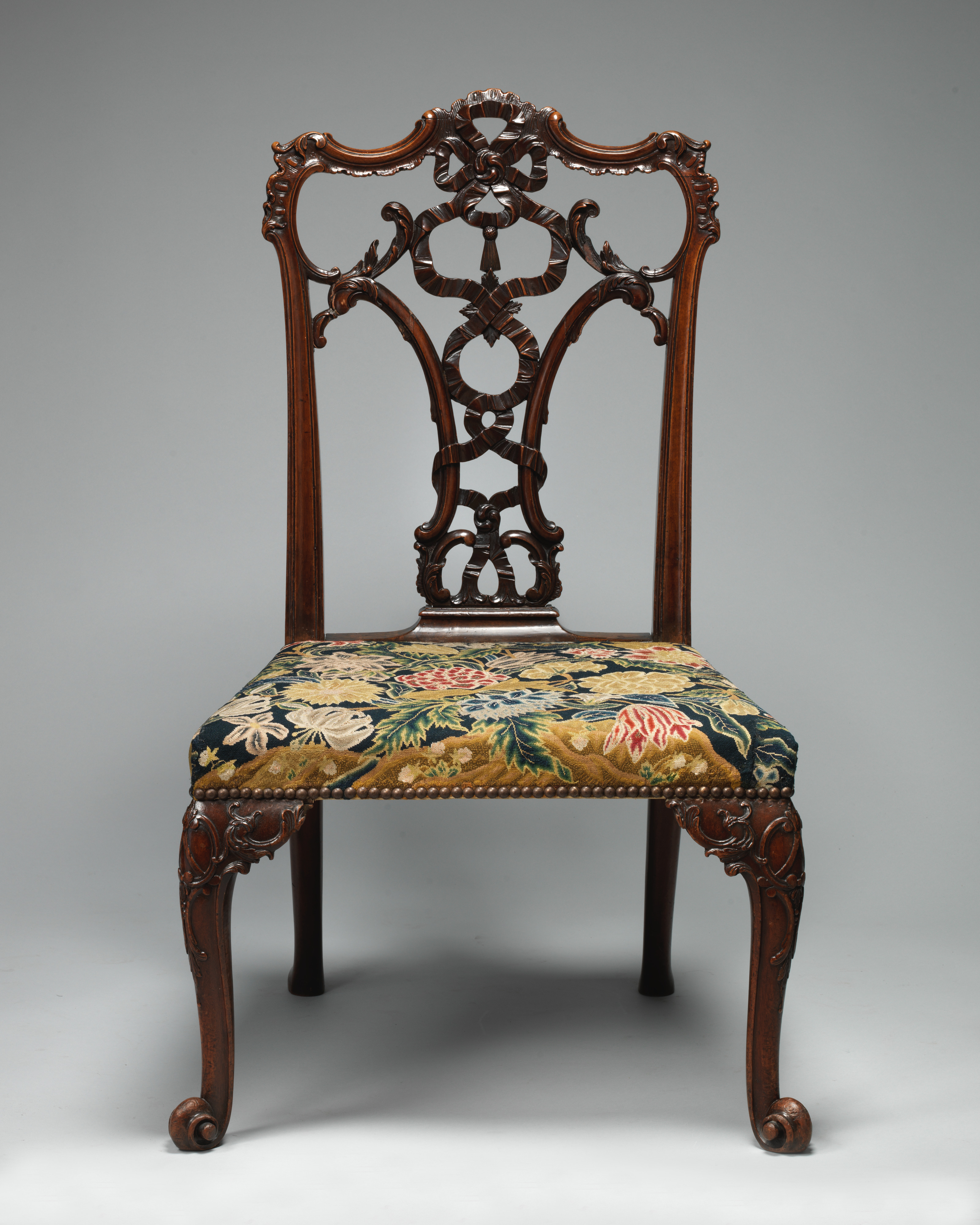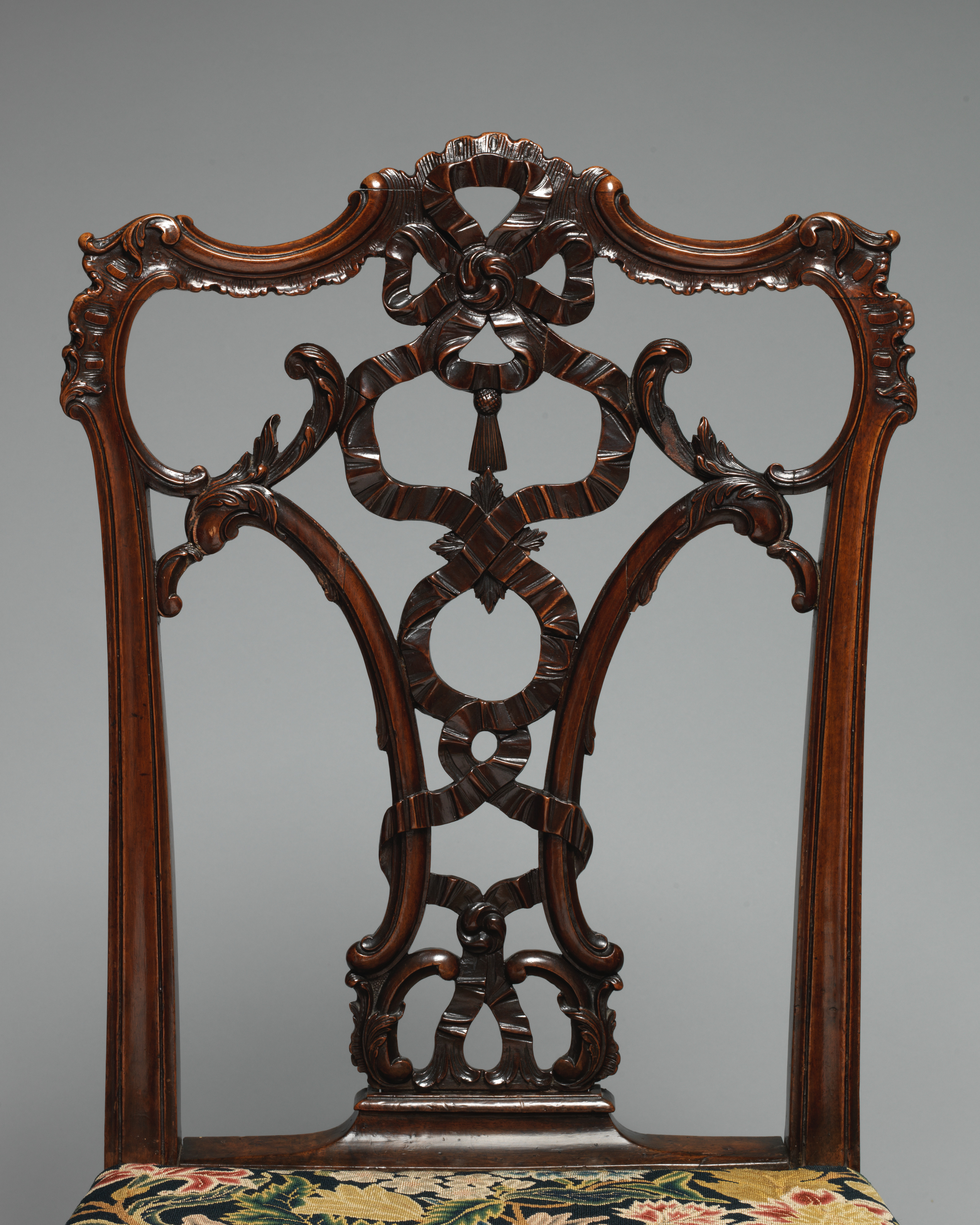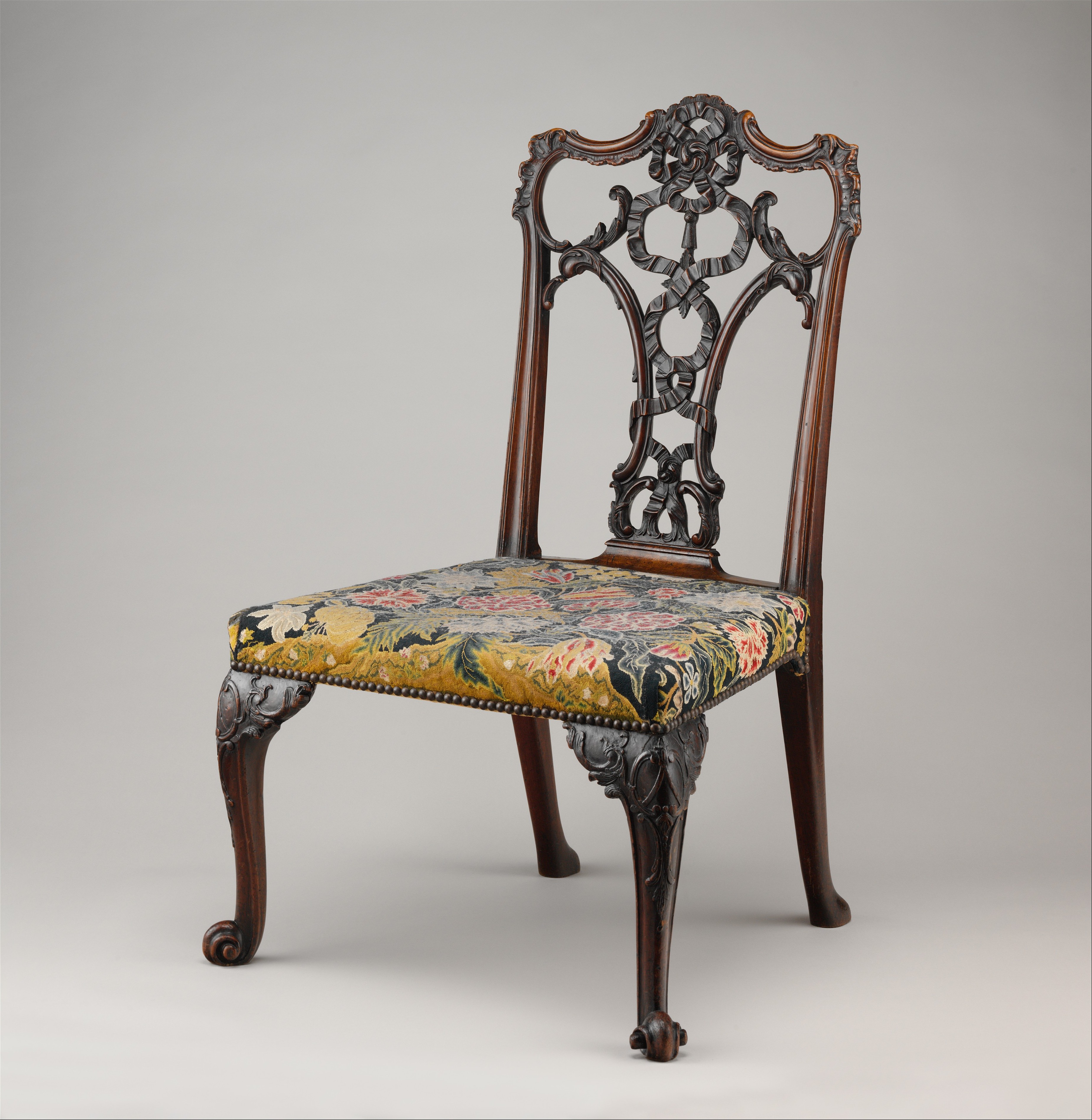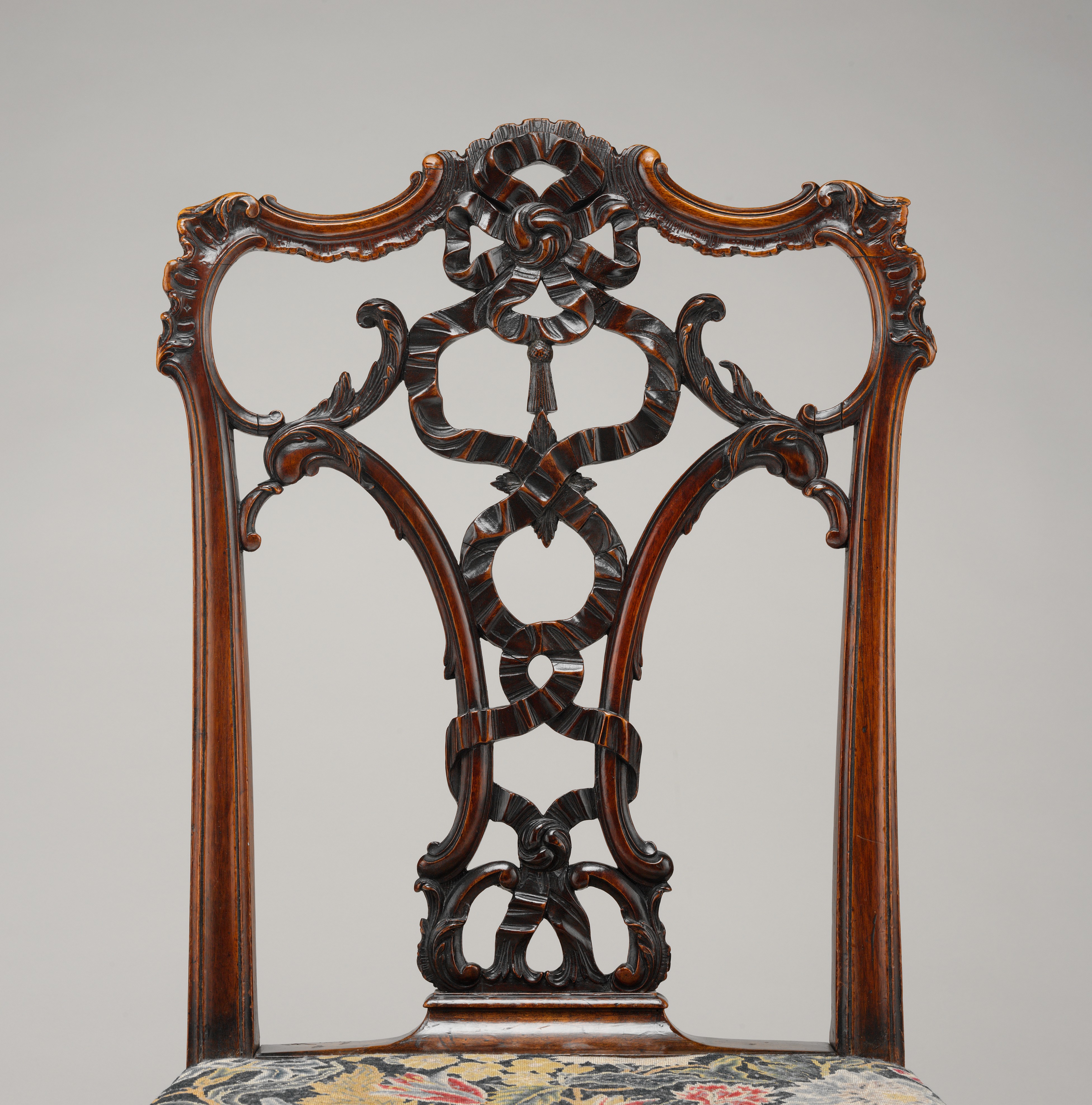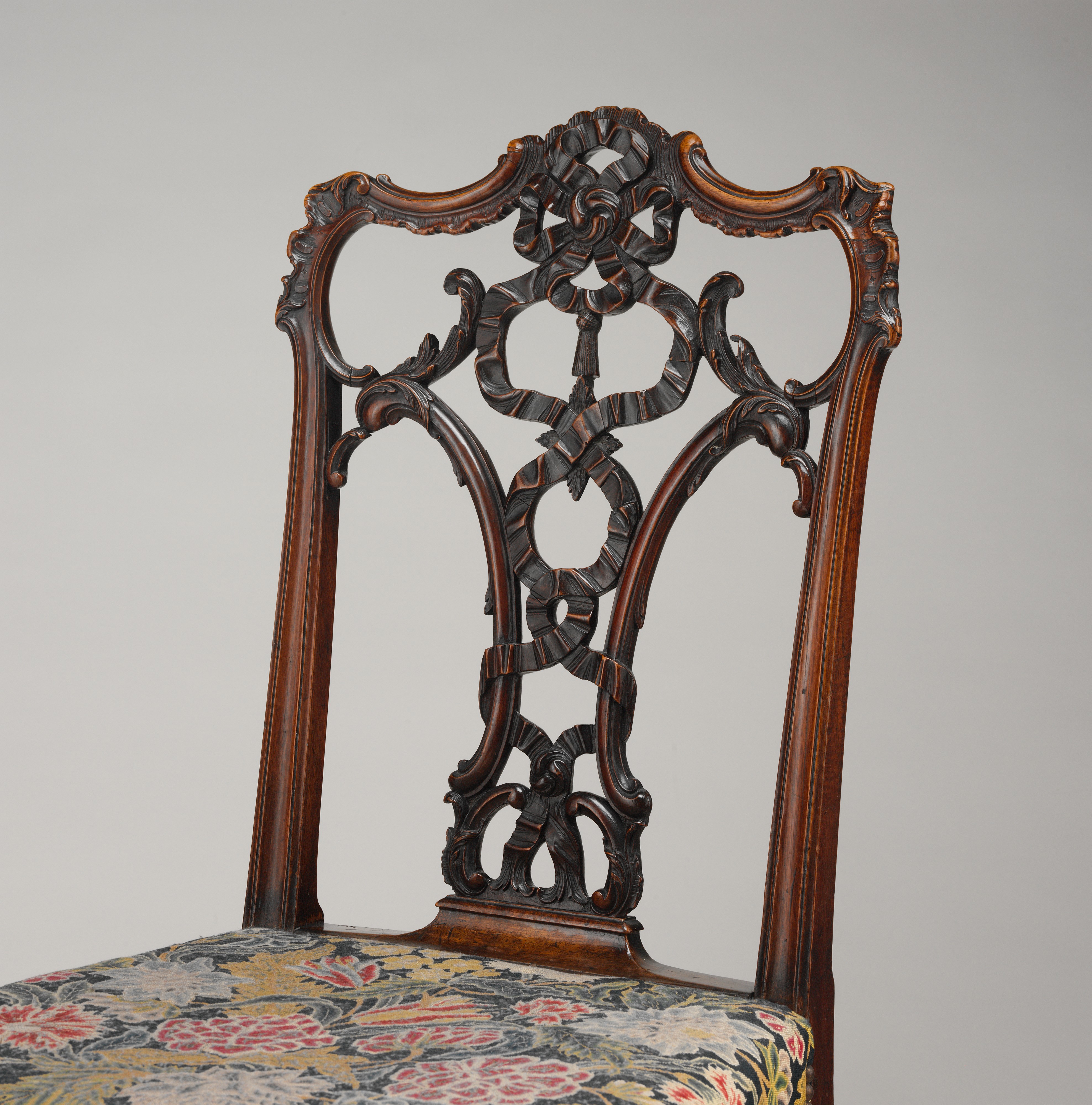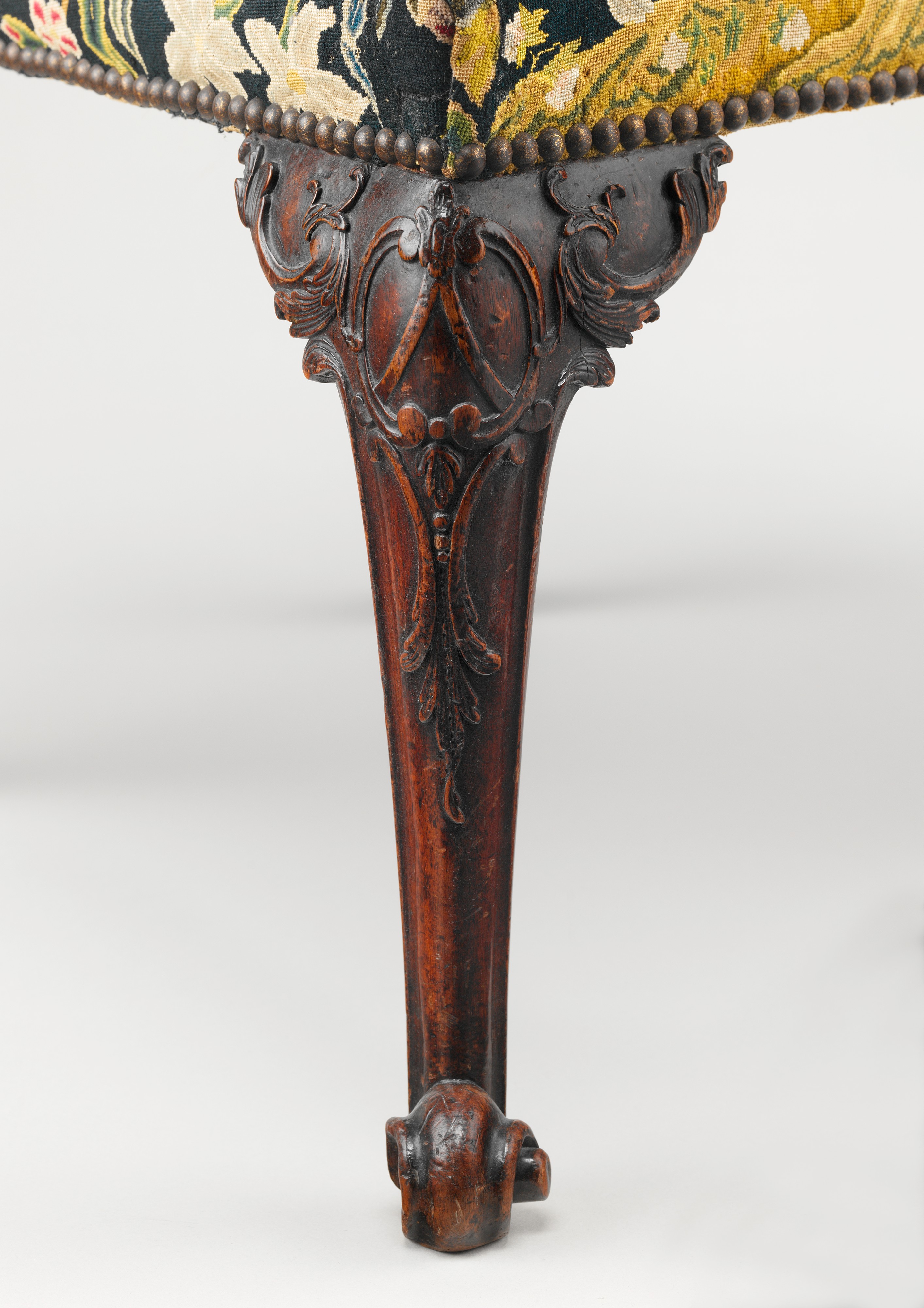Side Chair (one of a pair)
After a design by Thomas Chippendale British
Not on view
Whether Thomas Chippendale (1718-1779) invented the "ribband-back" chair is not known, but it is certainly the one chair design most frequently associated with his name. The present example, one of a pair of side chairs in the Museum [1] , is based on a design that was included in all three editions of his famous book, The Gentleman and Cabinet-Maker's Director. [2] The plate illustrates three "ribband back" chairs of similar design. In the first edition, he describes the three chairs without modesty as "the best I have ever seen (or perhaps have ever been made)." [3] In the third edition, he noted that "Several Sets have been made, which have given entire Satisfaction." [4] Little did he know just how many sets would be made by other cabinetmakers, both in London and the provinces, or that ribbonback chairs would continue to be popular throughout the Chippendale Revival in the nineteenth century and even into the twenty-first century.
In the 1910s and 1920s chairs in this style were usually attributed to Chippendale because of their correspondence to his designs. There followed a period of revisionism among furniture historians (still ongoing) when they realized that because these chairs were executed in such a wide range of quality, an attribution to Chippendale could be sustained only with other documentation. The present chairs have no recorded history before the 1950s. It is only on the basis of their construction, the type of mahogany, and the quality of the carving that they are dated to the years immediately following the publication of The Director.
One of the advantages of the design was its flexibility: parts of the ornament could be included or deleted as the cabinetmaker or patron wished. As Chippendale noted in the third edition of his book: "If any of the small Ornaments should be thought superfluous, they may be left out, without spoiling the Design." [5] In the case of the present chairs, the elements thought superfluous by the chairmaker were the ornament at the base of the splat and the entire apron.
The ribbonback design was also executed as a settee. An example with the same design as the present chairs is in the Victoria and Albert Museum, London. It has a two-section back and is accompanied by four chairs.[6]
Notes:
1. For further discussion of the Museum's two chairs, see Hackenbroch 1958a, p. 30, figs. 137, 138, pls. 110, 111; and Metropolitan Museum of Art 1977, p. 87, no. 155 (entry by William Rieder). The accession number of the second chair is 64.101.984.
2. Thomas Chippendale, The Gentleman and Cabinet-Maker's Director (London: privately printed). In the first and second editions, of 1754 and 1755, the chair is illustrated in plate XVI. In the third edition, of 1762, the same plate was renumbered as plate XV.
3. Note to Plate XVI, p. 8, in Chippendale 1754 and Chippendale 1755.
4. Note to Plate XV, p. 3, in Chippendale 1762.
5. Ibid.
6. Coleridge 1968, p. 191, figs. 173, 174.
This image cannot be enlarged, viewed at full screen, or downloaded.
This artwork is meant to be viewed from right to left. Scroll left to view more.
